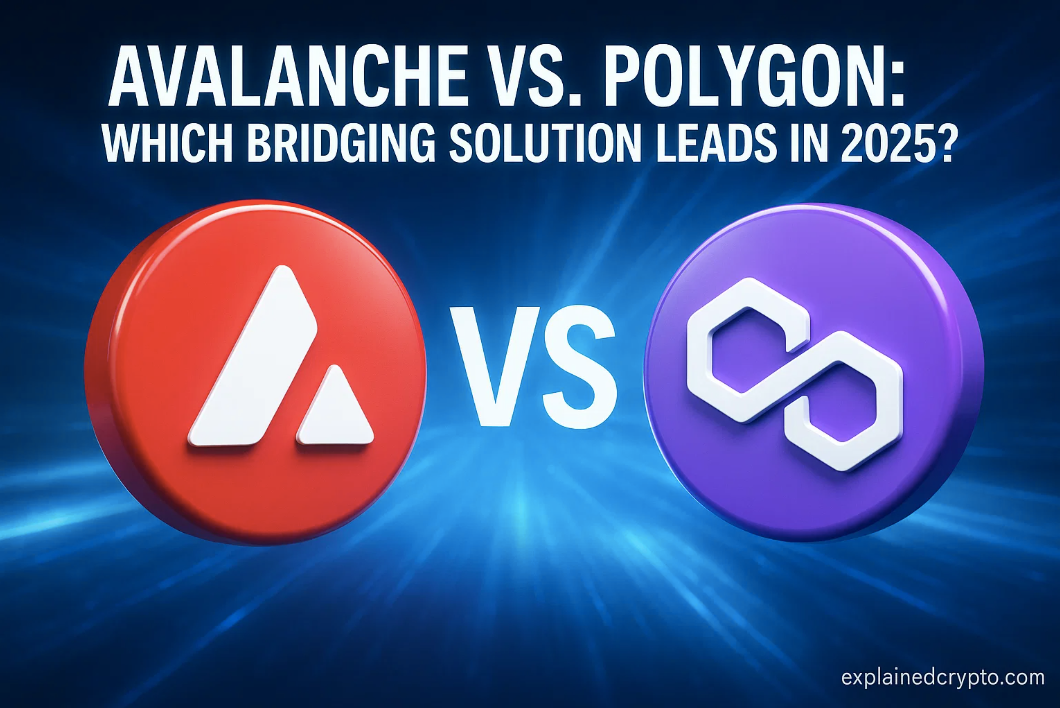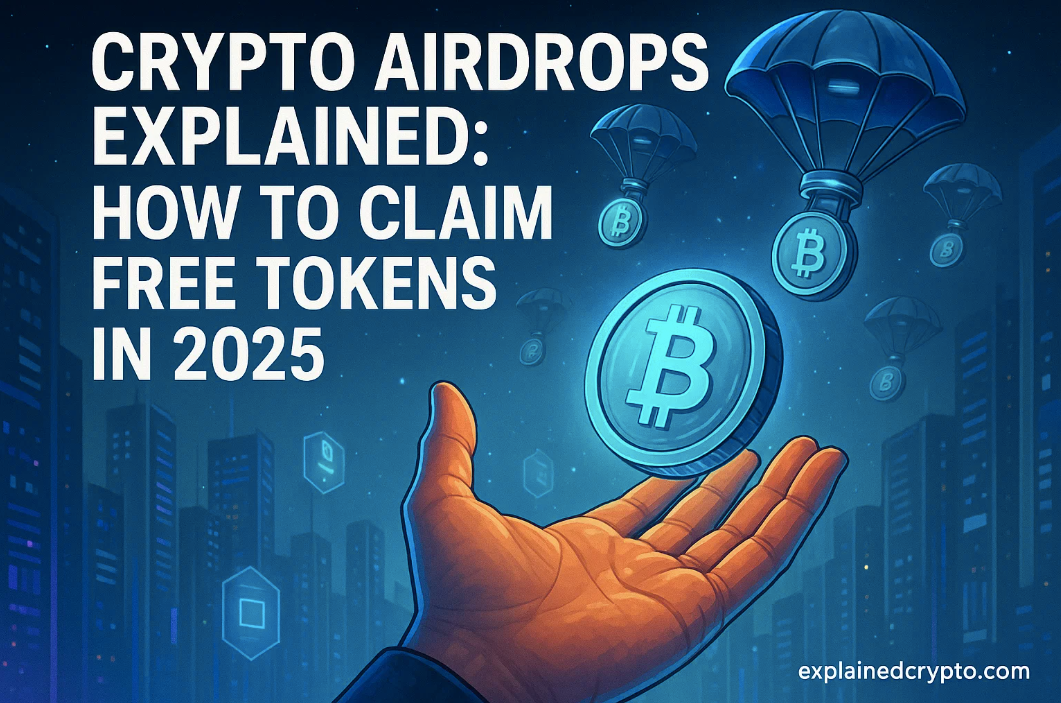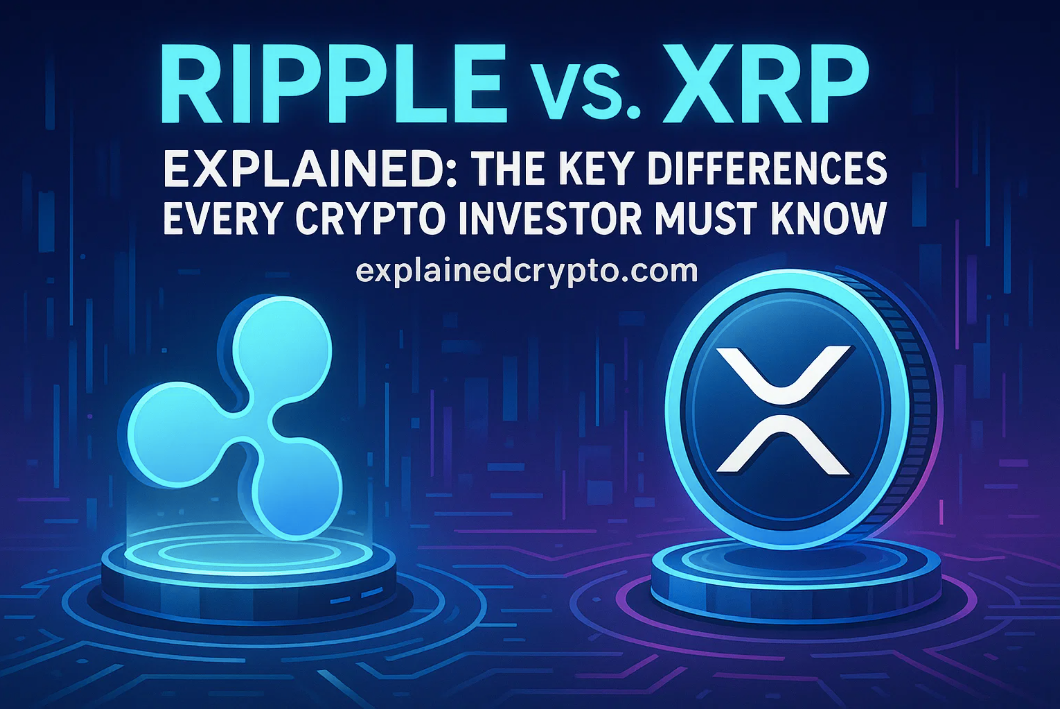- Polygon PoS Bridge leads in adoption, security, and ecosystem size, making it ideal for retail users and dApps.
- Avalanche Bridge excels in speed, cost, and institutional DeFi flows, appealing to capital-intensive users.
- Both bridges are evolving: Polygon is moving to zk security, while Avalanche plans multi-chain support to stay competitive.
As decentralized finance (DeFi) grows increasingly multi-chain, blockchain interoperability has shifted from a niche concern to a central pillar of Web3 infrastructure. Bridging solutions—technologies that enable users to move assets across different blockchains—are now critical to liquidity, user experience, and ecosystem growth.
Two ecosystems stand out in this race: Avalanche Bridge and Polygon PoS Bridge. Both have made significant strides since their launches, positioning themselves as dominant cross-chain gateways. But in 2025, with shifting liquidity flows, enhanced security architectures, and new scaling upgrades, which one has the edge? This analysis dissects their design, performance, security, adoption, and future outlook to uncover who truly leads the bridging landscape.
Avalanche Bridge: A Brief Overview
Launched in July 2021 by Ava Labs, the Avalanche Bridge (AB) was built to facilitate fast, secure, and low-cost transfers between Ethereum and Avalanche’s C-Chain. It replaced the older Avalanche-Ethereum Bridge (AEB), introducing a more secure and scalable architecture.
Key Highlights (as of 2025):
- Supports transfers from Ethereum mainnet and several Layer-2s to Avalanche C-Chain.
- Uses Intel SGX-powered trusted execution environments (TEEs) for bridge node security.
- Maintains custody through a set of independent bridge operators.
- Average transfer finality: 10–15 minutes.
- Bridge fees: Typically under $3 per transfer (dynamic with gas prices).
This infrastructure has made the Avalanche Bridge one of the largest bridges by total value transferred from Ethereum since 2022, consistently processing billions in cumulative volume.
Polygon PoS Bridge: A Proven Liquidity Gateway
The Polygon PoS Bridge, launched in 2020, serves as the primary bridge for moving assets between Ethereum and the Polygon PoS chain. While it predates Avalanche’s solution, Polygon has continuously upgraded its bridge contracts and validator security.
Key Highlights (as of 2025):
- Supports ERC-20, ERC-721, and ERC-1155 tokens.
- Relies on a dual-consensus model (checkpointed PoS + Plasma) for security.
- Withdrawal times: ~7 minutes for PoS route, 3–7 days for Plasma route.
- Gas costs: Much lower than Ethereum mainnet fees, usually under $1.
- Widely integrated across DeFi, gaming, and NFT dApps.
Polygon’s bridge has historically been the most-used Ethereum bridge by user count, processing millions of deposits and withdrawals annually.
Performance & Speed: Avalanche Leads in Settlement Time
When evaluating user experience, settlement time is paramount. Bridging delays can disrupt trading strategies, DeFi farming, and arbitrage. Here’s how the two compare:
| Metric | Avalanche Bridge | Polygon PoS Bridge |
|---|---|---|
| Average Deposit Time | 10–15 minutes | 7–10 minutes |
| Average Withdrawal Time | 10–15 minutes | 7 minutes (PoS), 3–7 days (Plasma) |
| Supported Assets | ETH, ERC-20s, stablecoins | ETH, ERC-20s, ERC-721/1155 |
| Gas Cost (Approx) | $2–$3 | <$1 |
Analysis:
Avalanche offers consistently fast withdrawals, which has become a key selling point, especially compared to Polygon’s Plasma route that still takes days. Polygon’s newer PoS withdrawal route is faster but still often faces congestion. In 2025, Avalanche holds an edge in predictability and speed, particularly for power users needing quick settlement.
Security Architecture: Polygon’s Maturity vs. Avalanche’s TEEs
Bridge security remains the most critical factor—given the billions lost to hacks since 2021.
- Avalanche Bridge: Uses Intel SGX-secured trusted execution environments where bridge nodes sign transactions inside secure enclaves. This offers hardware-enforced protection but does rely on a trusted set of operators, making it somewhat centralized.
- Polygon PoS Bridge: Uses a decentralized validator set (over 100 validators) with stake-slashing, and checkpointing to Ethereum for finality. Plasma route assets are fully secured by Ethereum mainnet.
Analysis:
Polygon’s security is more decentralized and Ethereum-aligned, appealing to risk-conscious users and institutional players. Avalanche’s design is more centralized but offers speed and cost efficiency. The SGX model has not seen any major breaches, but its trust assumptions differ from Polygon’s community-validated model. In pure decentralization and battle-tested security, Polygon has the edge.
Ecosystem Adoption: Polygon Still Dominates
A bridge’s success depends on how many dApps, wallets, and users integrate it.
- Polygon: Hosts over 4,000 dApps as of 2025, spanning DeFi (Aave, Uniswap v3, Balancer), gaming (Lens, Aavegotchi), and NFT marketplaces (OpenSea). Most leading wallets, including MetaMask and Coinbase Wallet, support direct bridging.
- Avalanche: Home to major DeFi platforms (Benqi, Trader Joe, GMX v2) and increasingly used in RWAs and institutional pilots. Fewer NFT and consumer dApps than Polygon, though its DeFi TVL is higher per app.
Ecosystem TVL (mid-2025 estimates):
| Ecosystem | TVL (DeFiLlama) | Active dApps | Monthly Bridge Users |
|---|---|---|---|
| Polygon | ~$6.5B | 4,000+ | 1.2M+ |
| Avalanche | ~$4.8B | 1,100+ | 600K+ |
Analysis:
Polygon’s user base and dApp diversity give it network effects Avalanche hasn’t matched yet. However, Avalanche attracts larger per-user capital flows, especially from institutional DeFi. Polygon wins on scale, while Avalanche excels on capital intensity.
Developer & Institutional Engagement
Polygon has aggressively pursued enterprise and government partnerships (Nike, Reddit, Starbucks, and Indian government pilots), while building zkEVM for scaling. Many of these partners rely on the Polygon PoS Bridge as their primary on/off-ramp.
Avalanche has targeted institutional finance, launching subnets for banks like JPMorgan’s Onyx pilots and tokenized assets like WisdomTree funds. These often use the Avalanche Bridge to port wrapped assets from Ethereum.
Analysis:
Polygon dominates consumer and retail-facing Web3 adoption, while Avalanche positions as the institutional-grade finance network. These different audiences shape bridge usage: Polygon moves more transactions, Avalanche moves more value per transaction.
UX & Integration: Polygon’s Simplicity Wins for New Users
User experience remains crucial to adoption.
- Polygon PoS Bridge: Has a simple, widely embedded interface across major wallets and dApps. It offers a clean MetaMask connection flow, often with fiat on-ramps integrated.
- Avalanche Bridge: Requires users to switch networks manually and use a standalone UI. While fast, it feels more advanced-user focused.
Analysis:
Polygon’s onboarding simplicity makes it the default bridge for new users, while Avalanche caters to experienced DeFi traders who prioritize speed and cost over UX polish.
Outlook for 2025 and Beyond
Several upcoming upgrades could shift the balance:
- Avalanche Bridge: Plans to add support for non-EVM chains and Layer-2 rollups, plus decentralized validator expansion.
- Polygon PoS Bridge: Will merge into Polygon 2.0 architecture, making it fully zk-secured and removing the 7-day withdrawal delay while further cutting costs.
Implication:
If Polygon completes its migration to a zk-secured bridge by 2025 Q4, it could combine high security and fast settlement, eroding Avalanche’s speed advantage. Avalanche must expand beyond Ethereum-Avalanche corridors to stay competitive.
Also Read: How Cryptocurrency Really Works (And Why It Could Change Money Forever)
Two Leaders, Different Strengths
As of 2025, the Polygon PoS Bridge remains the most widely used and trusted bridge by user count, integrations, and decentralized security. It is ideal for retail users, dApps, and those seeking Ethereum-level security assurances.
Meanwhile, the Avalanche Bridge leads in speed and institutional usage, providing fast finality and low costs that appeal to capital-heavy users and enterprise subnets.
Rather than a zero-sum contest, these bridges represent two distinct models: Polygon as the retail liquidity superhighway, and Avalanche as the fast institutional express lane. The cross-chain race is far from over—but for now, both stand as cornerstones of a multi-chain Web3.
Disclaimer: The information in this article is for general purposes only and does not constitute financial advice. The author’s views are personal and may not reflect the views of explainedcrypto.com. Before making any investment decisions, you should always conduct your own research. explainedcrypto.com is not responsible for any financial losses.





